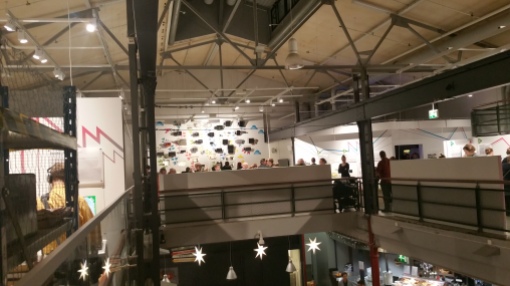 Update: the new design is now live at: www.unet.fi. – My current university side home pages are from year 2006, so there is a decade of Internet and WWW evolution looming over them. Static HTML is not so bad in itself – it is actually fast and reliable, as compared to some more flaky ways of doing things. However, people access online content increasingly with mobile devices and getting a more “responsive” design (that is, web page design code that scales and adapts content into small or large screen devices differently) is clearly in order.
Update: the new design is now live at: www.unet.fi. – My current university side home pages are from year 2006, so there is a decade of Internet and WWW evolution looming over them. Static HTML is not so bad in itself – it is actually fast and reliable, as compared to some more flaky ways of doing things. However, people access online content increasingly with mobile devices and getting a more “responsive” design (that is, web page design code that scales and adapts content into small or large screen devices differently) is clearly in order.
When one builds institutional home pages as part of the university or other organisation infrastructure, there are usually various technical limitations or other issues, so also in this case. While I have a small “personnel card” style, official contact page in our staff directory, I have wanted my personal home pages to include more content that would reflect my personal interests, publication activity, and to carry links to various resources that I find important or relevant. Our IT admin, however, has limited the WWW server technologies to a pretty minimal set, and there is not, for example “mod_rewrite” module loaded to the Apache that serves our home pages. That means that my original idea to go with a “flat file CMS” to create the new pages (e.g. Kirby: https://getkirby.com/) did not work. There was only one CMS that worked without mod_rewrite that I could find (CMSimple: https://www.cmsimple.org/), and testing that was pain (it was too clumsy and limited in terms of design templates and editing functions for my, non-coder tastes). The other main alternative was to set up a CMS that relies on an actual database (MySQL or similar), but that was forbidden from personal home pages in our university, too.
For a while I toyed with an idea that I would actually set up a development server of my own, and use it to generate static code that I would then publish on the university server. Jekyll (https://jekyllrb.com/) was most promising option in that area. I did indeed spend few hours (after kids have gone to bed) in setting up a development environment into my Surface Pro 4, building on top of the Bash/Ubuntu subsystem, adding Python, Ruby, etc., but there was some SSH public key signing bug that broke the connection to GitHub, which is pretty essential for running Jekyll. Debugging that road proved to be too much for me – the “Windows Subsystem for Linux” is still pretty much a work-in-progress thing. Then I also tried to set up an Oracle VM VirtualBox with WordPress built in, but that produced some other, interesting problems of its own. (It just also might be a good idea to use something a bit more powerful than Surface Pro for running multiple server, photo editing and other tools at the same time – but for many things, this tablet is actually surprisingly good.)
Currently, the plan is that I will develop my new home pages in WordPress, using a commercial “Premium” theme that comes with actual tutorials on how to use and adapt it for my needs (plus they promise support, when I’ll inevitably lose my way). In last couple of days, I have made decent progress using the Microsoft Webmatric package, which includes an IIS server, and pretty fully featured WordPress that runs on top of that (see: http://ivanblagojevic.com/how-to-install-wordpress-on-windows-10-localhost/). I have installed the theme of my choice, and plugins it requires, and started the selection and conversion of content for the new framework. Microsoft, however, has decided to discontinue Webmatrix, and the current setup seems bit buggy, which makes actual content production somewhat frustrating. The server can suddenly lose reading rights to some key graphics file, for example. Or a WordPress page with long and complex code starts breaking down at some point, so that it fails to render correctly. For example, when I had reached about the half way point in creating the code and design for my publications page, the new text and graphics started appearing again from the top of the page, on top of the text that was there already!
I will probably end up setting up the home pages into another server, where I can actually get a full Apache, with mod_rewrite, MySQL and other necessary functions for implementing WordPress pages. In UTA home pages there would then be a redirect code that would show the way to the new pages. This is not optimal, since the search engines will not find my publications and content any more under the UTA.fi domain, but this is perhaps the simplest solution in getting the functionalities I want to actually run as they should. Alternatively, there are some ways to turn a WordPress site into static HTML pages, which can then be uploaded to the UTA servers. But I do not hold my breath whether all WordPress plugins and other more advanced features would work that way.
Happy Geek Holidays!
















You must be logged in to post a comment.